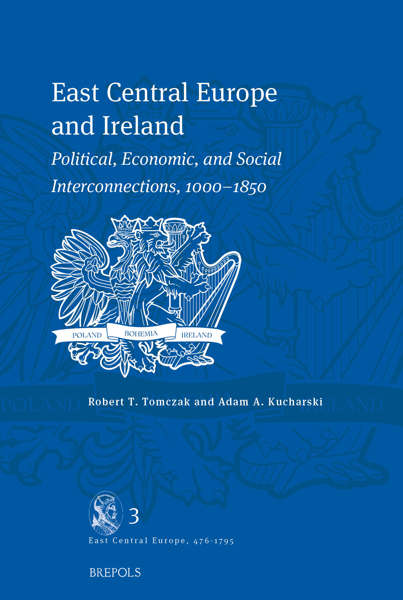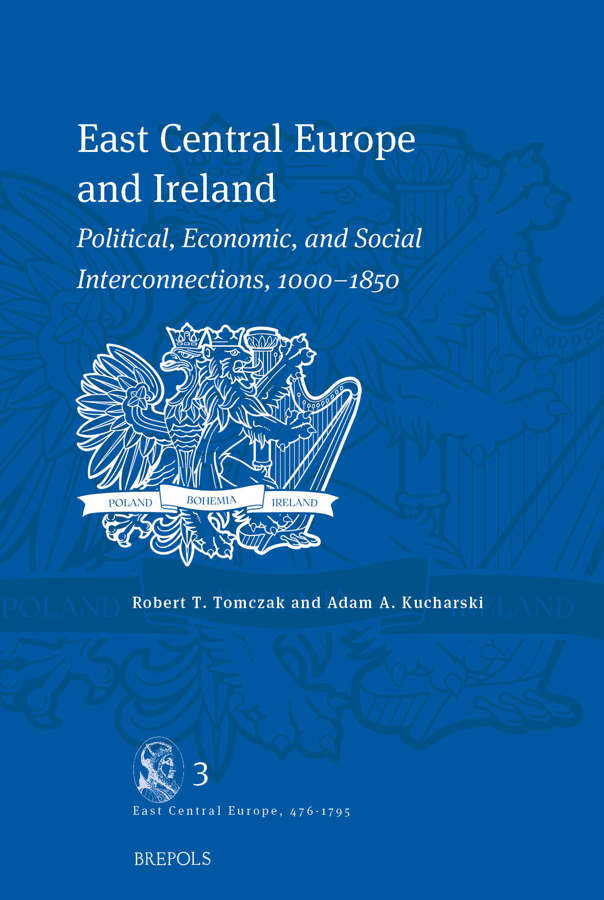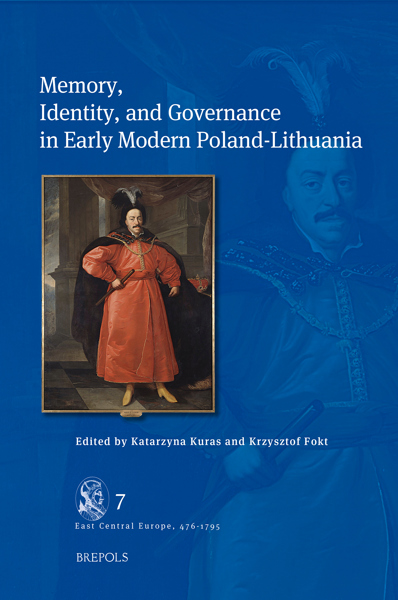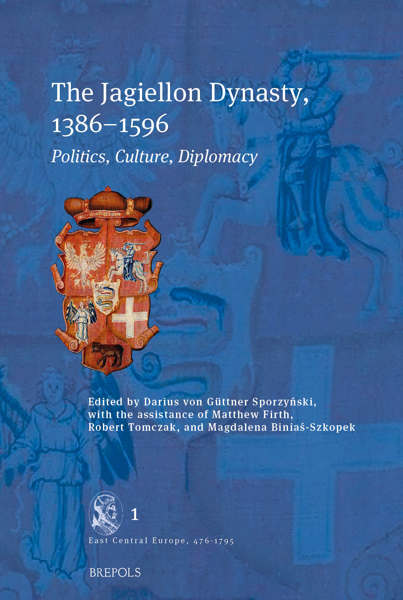
East Central Europe and Ireland
Political, Economic, and Social Interconnections, 1000–1850
Robert Tomczak, Adam Andrzej Kucharski
- Pages: 203 p.
- Size:156 x 234 mm
- Illustrations:18 b/w, 2 tables b/w.
- Language(s):English
- Publication Year:2024
- € 75,00 EXCL. VAT RETAIL PRICE
- ISBN: 978-2-503-60432-9
- Hardback
- Available
- € 75,00 EXCL. VAT RETAIL PRICE
- ISBN: 978-2-503-60433-6
- E-book
- Available
Offers a re-examination of the nature of European interconnections by examining relations between Ireland, Poland, and Czechia. The volume explores the relations between the three countries, three peoples, and arguably three distinct cultures on a timeframe stretching from the Middle Ages to the nineteenth century. It offers new and significantly distinct insights of what it meant to be European from a perspective rarely taken in the historiography.
- Political & institutional history (c. 1501-1800)
- Cultural exchanges, transfers and influences
- Political & institutional history (c. 500-1500)
- Religious history (c. 1501-1800)
- Demography, migration & settlement studies (c. 1501-1800)
- British Isles (c. 1501-1800)
- East-Central & Eastern Europe (c. 1501-1800)
Robert T. Tomczak graduated with a PhD from the Faculty of History, Adam Mickiewicz University, Poznan, Poland, and is currently a research fellow at Institute of History of the Czech Academy of Sciences in Prague (Czechia). During 2019/2020 he held a postdoctoral Swiss Government Excellence Scholarship at Basel University.
Adam A. Kucharski graduated with a PhD from the Institute of History, Adam Mickiewicz University, Poznan, Poland. He was awarded the prestigious research scholarship of the Lanckoronski Foundation (London). He is the editor (along with R.T. Tomczak) of ‘Polish-Irish Historical Studies’, a new research and educational project at the Adam Mickiewicz University.
This book explores the broad scope of political, economic, and social aspects of relations between Central Europe (focused on Poland and the lands of the Czechs) and Ireland. Taking a longitudinal approach, this study charts the interaction between the western and the central-eastern peripheries of Europe from the Middle Ages to the period after the Third Partition of Poland-Lithuania in 1795. The authors examine how the relationship between the geographically opposite ends of Europe evolved. Shaped by the shifts of ‘political tectonic plates’ they argue that the evolution can be described in general terms: from a largely unidirectional to an interconnected chain of events. This book demonstrates similarities and analyses differences in a complex, yet unexplored, past of the three emergent nations; nations which in the public perception were overshadowed by their mighty neighbours for far too long.
Preface
Chapter 1. The Middle Ages
- Christianity in Ireland, Poland, and the Bohemian Principality
- The Earliest References and Research
- Religious Matters and Irish Martyrs as Models of Holiness in Seventeenth-Century Poland
- External Travel Destinations for the Polish and Czech Nobility
- Seats of Learning as Centres of Mutual Interest
- Czech Protestants and the Idea of Settlement in Ireland
- The Conquest of Ireland
- Unitas Fratrum in the Polish-Lithuanian Commonwealth
- The Issue of Emigration and Oliver Cromwell
- Looking for a New Homeland: The English Proposal
- Conclusion
- The Irish, Poles, and Czechs at the End of the Eighteenth and the Start of the Nineteenth Centuries
- Mutual Interests
- In the Parliament of the United Kingdom
- The Period of European Revolutions
Appendix 1. Information Concerning Ireland Included in Polish Encyclopaedias
Appendix 2. Selected Irish Biographies
Bibliography
Index




